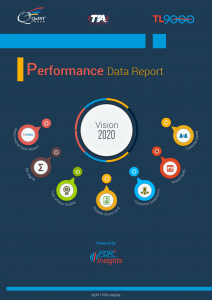
It is a methodology that relies on a collaborative team effort to improve performance by systematically removing waste and reducing variation. It combines lean manufacturing/lean enterprise and Six Sigma to eliminate the eight kinds of waste (muda): Defects. Over-Production.
(COPQ) consists of those costs which are generated as a result of producing defective material.
This cost includes the cost involved in fulfilling the gap between the desired and actual product/service quality. It also includes the cost of lost opportunity due to the loss of resources used in rectifying the defect. This cost includes all the labor cost, rework cost, disposition costs, and material costs that have been added to the unit up to the point of rejection. COPQ does not include detection and prevention cost.
Supplier Score Card can be defined as the business process that includes the methods and systems used to collect and provide information in order to measure, rate, or rank suppliers on a continuous basis. Many companies use the term “scorecard” to describe the report that conveys performance information to suppliers.
The commercial value that derives from consumer perception of the brand name of a particular product or service, rather than from the product or service itself.Brand equity has four dimensions—brand loyalty, brand awareness, brand associations, and perceived quality, each providing value to a firm in numerous ways. Once a brand identifies the value of brand equity, they can follow a brand equity roadmap to manage that potential value.
It is the total of lifetime values of all your current and future customers– the sum total of all the value you’ll ever realize from customers. Because customers create all value, this means that Customer Equity is virtually the same number as the “going concern” value of your business.
Over the next few years every app, application and service will incorporate AI at some level. AI will run unobtrusively in the background of many familiar application categories while giving rise to entirely new ones. AI has become the next major battleground in a wide range of software and service markets, including aspects of ERP. “Challenge your packaged software and service providers to outline how they’ll be using AI to add business value in new versions in the form of advanced analytics, intelligent processes and advanced user experiences,” notes Cearley.
Intelligent apps also create a new intelligent intermediary layer between people and systems and have the potential to transform the nature of work and the structure of the workplace, as seen in virtual customer assistants and enterprise advisors and assistants.
“Explore intelligent apps as a way of augmenting human activity, and not simply as a way of replacing people,” says Cearley. Augmented analytics is a particularly strategic growing area that uses machine learning for automating data preparation, insight discovery and insight sharing for a broad range of business users, operational workers and citizen data scientists.”
